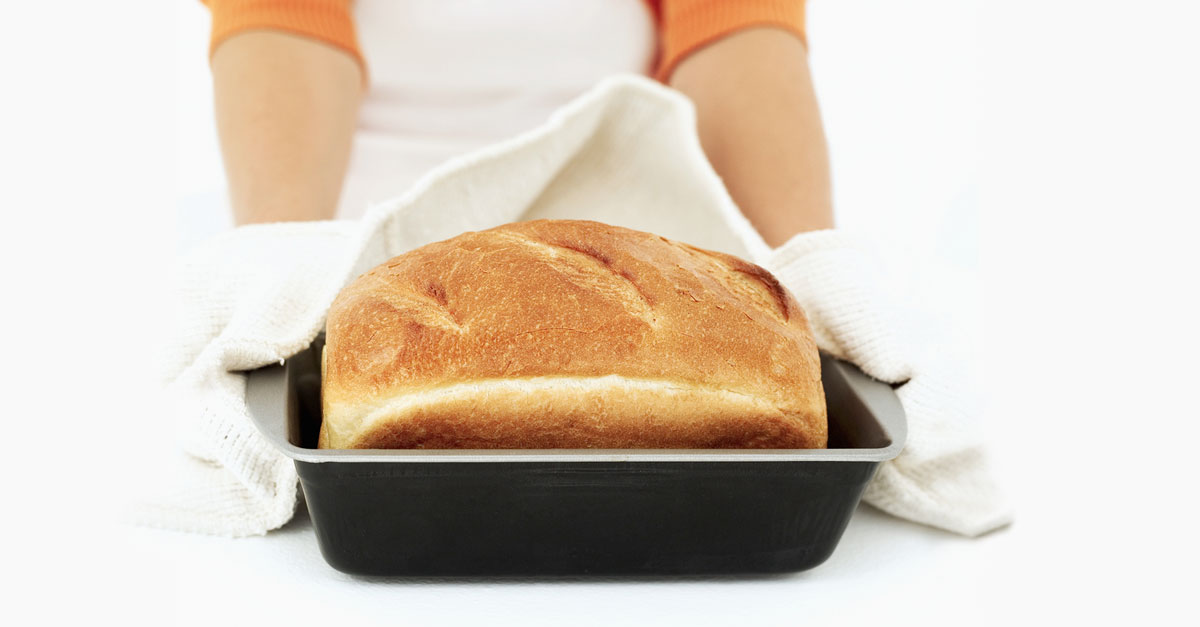Many of us love bread, but it doesn’t always love us back. That’s especially true for people with irritable bowel syndrome (IBS)—one in eight Americans. Eating bread gives them gas—and worse.
Why bread? Many people think it’s the bread’s gluten, but there’s growing evidence that the real culprits are hard-to-digest short-chain sugars called FODMAPs—it stands for “fermentable oligo-di-monosaccharides and polyols.” Instead of being digested, these sugars pass through to the lower intestine, where they are fermented by bacteria. In many people with IBS, that can cause bloating, gas, belly pain, nausea and diarrhea or constipation.
The biggest dietary source of FODMAPs in the American diet is—you guessed it—bread. The primary type of FODMAP in breads is fructans. Indeed, new research, published in Gastroenterology, finds that people who attribute their IBS symptoms to gluten actually may be sensitive to fructans instead.
If you love good bread, though, there may be a way to enjoy it—and still have good digestion.
The secret? The bread just has to rise.
A long time.
It’s Not the Grain, It’s the Baking Method
In the search for healthier breads, some people have turned to ancient forms of wheat—spelt, emmer and einkorn. These date back to times before modern hybridized wheat was developed. But when researchers at the University of Hohenheim, Stuttgart, Germany, measured the FODMAPs in these ancient strains as well as in modern strains, they all had about the same amounts.
What made a difference, though, was how long a bread’s dough was allowed to rise. In traditional bread making, bread dough is allowed to rest while yeast in the dough consumes sugars in the dough, and the yeast emits carbon dioxide gas that becomes trapped in the dough and makes it rise…and then the dough is punched down and given time to rise again. This rising process is called proofing by bakers—and what’s really happening is that the yeast is digesting the dough’s sugars.
What’s that got to do with FODMAPs, and fructans in particular? What the latest research shows is that the extended proofing involved in traditional bread making makes a big difference. After one hour of rising, all the fructans still were in the dough because the yeast had gone after the dough’s simple sugars (which aren’t FODMAPs) first. After two-and-a-half hours of rising, fructans had declined by about half. And after four hours of rising, fructans had practically disappeared—declining by about 90%.
Good, Old-fashioned Bread
If you’ve found that bread bothers your digestion, it could be because of the fructans in it—and you might be able to enjoy bread without distress if the bread has been given plenty of time to rise. Commercial breads that are specifically made and labeled as low-FODMAP are starting to appear on the market but still are not easy to find. One alternative you can try is artisanal bread that has been proofed for four or more hours—even if the baker who made it wasn’t concerned about FODMAPs, it might work for you. Or, of course, you can make your own bread from a recipe that calls for a proofing time of four hours or more. Tip: Sourdough bread tends to be naturally lower in FODMAP content than typical bread because it requires a longer fermentation, which breaks down the fructans more quickly.
One final note: Even if you have IBS, there’s probably no reason to avoid all FODMAPs entirely. They’re in many different kinds of nutritious foods—including many fruits and vegetables and dairy foods. They’re not inherently unhealthy. Indeed, they actually serve as “probiotics”—they feed the beneficial bacteria in your lower intestines. If you can tolerate them, they can be healthful.
Plus, the FODMAPs that bother one person with IBS may be different from those that bother someone else with the condition. If you have IBS symptoms, work with a health-care provider (such as a registered dietician) to identify which FODMAPs are causing your particular symptoms. There’s even a test for that now.


